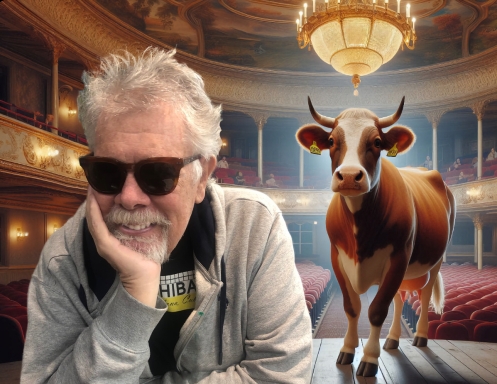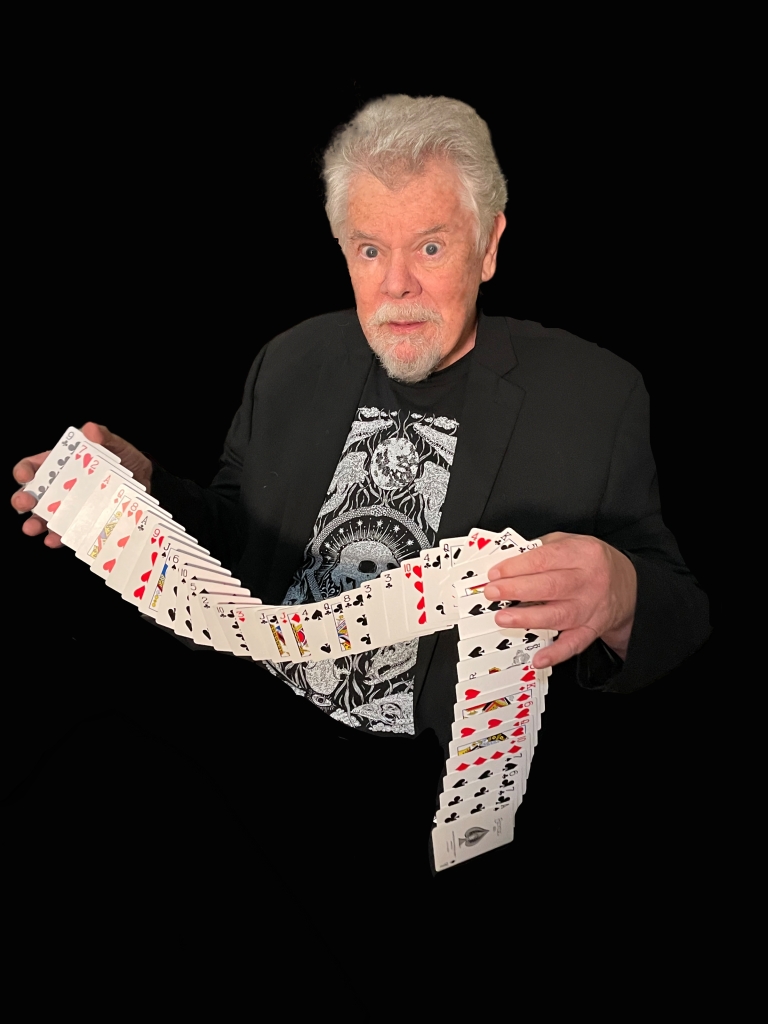Sacred Cows and Other Variables,

In 2008, I purchased a business strategies book by Robert Kriegel & David Brandt called Sacred Cows Make the Best Burgers. I loved the title and the premise it was based on. Recently, I came upon the book in one of my bookcases and it flashed through my mind that this was exactly the right approach to tackle some of magic’s recurrent issues. Before we begin, let’s look at what a sacred cow is. In modern usage, the term “sacred cow” refers to an idea or practice that people consider, often unreasonably, immune from question or criticism. You probably see where I’m going with this article, so we will take a closer look at some potential Sacred Cows.
The magic community tends to revere the past and many magicians are loathe to step into the current age. In many ways, numerous magicians have never really left the Victorian era. Look at the props that are still seen in magic shows. Change bags with long poles as handles, chalk/slates, feather flowers, clunky wooden boxes with alarmingly colored pictures stenciled onto them, 6-inch square bird cages, etc, etc.

Magicians love their props; in fact, some really do believe that the audience finds them as irresistible as they do. No layperson goes to a magic show just to look at the props. To any audience, it is important that the magician is “making magic” and not the curious cabinet he places his assistant into. The Victorian era may have been a golden era for magic, but this is 2024 not 1904, if you want to make your act look unintentionally dated carry right on. However, it bares thinking that these props I just mentioned were perfectly contemporary to the time they were devised. Time has not stood still, and neither must we. It is fine to feature one “antique” piece of apparatus and draw attention to its arcane past, but unless you are auditioning for the Smithsonian Museum let’s do our best to keep things relevant.
There are other sacred cows that we can look at. Ever since I started performing magic in the ‘60s I have heard people quoting the Robert-Houdin line “A magician is an actor playing the part of a magician.” I hear this term being used ad nauseum but with a certain contemporary magical misinterpretation. In the last decade scripting, storytelling, and other theatrical ideas are becoming buzzwords in the magic industry. This is a good thing, however, a great many magicians have misunderstood how this affects the central role of the magician/actor conundrum.
Being an actor doesn’t mean you need to wear a steampunk top hat or an exotic costume. This is just the outer image, while the true art of acting is the ability to react to circumstances and other people. When you have done something amazing then look amazed. Look surprised when something surprising has happened. Acting is the way you make your performance more interesting and effective by using verbal, facial, and physical means. Subtlety should be the keynote when it comes to acting in the average magic show. The great Gary Cooper was once asked about acting and replied, “Acting is a wonderful thing but never get caught doing it.” That is a quote that puts everything in the right place.

Scripting is another powerful tool, but it doesn’t mean you need to spin an elaborate yarn about how you learned this magic feat while living in the Himalayas! A good script needs to be as economical with words as possible. The best scripting is writing down what you say and then severely editing it. Magicians use way too many words thus diluting their impact, and needlessly slowing down the show’s pacing. Jay Leno says that when he tries a new joke if it works, he does it again the next show but cuts out one word. If it still gets a laugh, the next night he cuts out another word. George Burns talking to Johnny Carson described this process as “sandpapering.”
Another sacred cow these days is the mystique magicians hold for Harry Houdini. Most of us grew up reading about Houdini’s life and escapes and he holds a special place in our collective hearts. This is not necessarily the case with the general public. Houdini has incredible name recognition in the United States; however, this is not an emotional bond. Of course, there are great ways to weave a Houdini theme into a show or project. Magicians who think that using Houdini’s name will attract a lay audience and fill the seats are being naïve even if it is on Halloween.
The most frequent advice given to any aspiring magician is “Practice, practice, practice!” This dictum is so religiously proclaimed, and with such frequency, that it is a Sacred Cow that requires examining. Practice gives one a chance to develop a sense memory with the props and moves you want to employ. The reason that practice works is because of the repetition involved, if you are practicing doing things incorrectly you are driving errors deep into your mind. Vince Lombardi shared his wisdom when he said, “Practice does not make perfect. Only perfect practice makes perfect.”
There are many sacred cows in a magician’s world, if we just examine our inner meta-beliefs, it is easy to spot our personal sacred cows. Once observed, we can begin to make our decisions unaffected by conventional wisdom. Magic is a creative art and conventional wisdom should be the starting point of your journey and offer you the chance to take off in any direction and test your instincts. The philosopher Friedrich Nietzsche said, “Nothing is true, everything is allowed,” and that is the rallying cry for true creativity. The Dalai Lama put it even more plainly when he said, “Learn the rules so that you know how to break them.”


This should be required reading. Every performer needs to deal with the sacred cows we have, both present and future.